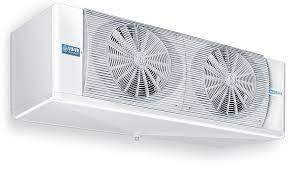Table of Contents
The Benefits of Using Cold Room PUF Panels in Food Storage Facilities
Cold Room PUF Panels (Polyurethane Foam) Panels are widely used in food storage facilities such as cold rooms, chillers, and freezers due to their excellent insulation properties. Here are some benefits of using Cold Room PUFs Panels:
Energy Efficiency:
Cold Room PUF Panels have low thermal conductivity, which means they can prevent the transfer of heat effectively. This leads to a reduction in the amount of energy required to maintain the desired temperature inside the cold room, resulting in lower electricity bills.
Temperature Control:
Cold Room PUF Panels provide excellent temperature control by keeping the cold air inside the room and preventing warm air from entering. This helps in maintaining a consistent temperature and preventing food spoilage.
Hygiene and Food Safety:
PUF panels are made of non-toxic materials that are safe for storing food. They are also easy to clean and maintain, ensuring a hygienic environment for food storage.
Durability:
Cold Room PUF Panels are highly durable and can withstand extreme temperatures, moisture, and pressure. They are also resistant to corrosion, which makes them ideal for use in harsh environments.
Customizable:
Cold Room PUF Panels can be customized to fit the specific needs of the food storage facility. They are available in a range of sizes, thicknesses, and colors, making them suitable for different applications.
Overall, Cold Room PUFs offer numerous benefits to food storage facilities, including energy efficiency, temperature control, hygiene and food safety, durability, and customization. Therefore, they are an ideal solution for any business that needs to store food at a controlled temperature.
Maintaining Temperature Control with Cold Room PUF Panels
Temperature control is a critical factor in food storage facilities such as cold rooms, chillers, and freezers. Cold Room PUF (Polyurethane Foam) is an excellent choice for maintaining temperature control due to its high insulation properties. Here are some ways to maintain temperature control with Cold Room PUF Panels:
Proper Installation:
Proper installation of Cold Room PUFs Panels is crucial to maintaining temperature control. This ensures that the cold air stays inside the room and prevents warm air from entering.
Regular Maintenance:
Regular maintenance is essential to ensure that the Cold Room PUF Panels are working correctly. This helps to maintain the panels’ insulation properties and prevents air leakage.
Temperature Monitoring:
Temperature monitoring is crucial in maintaining temperature control. A temperature monitoring system should be installed to monitor the temperature inside the cold room continuously.
Door Maintenance:
The cold room door is another critical factor in maintaining temperature control.
By following these guidelines, you can ensure that your food storage facility is operating efficiently and effectively.
Proper Loading:
Proper loading of the cold room is also essential to maintain temperature control. This prevents temperature fluctuations and helps to maintain a consistent temperature.
In summary, maintaining temperature control with Cold Room PUF requires proper installation, regular maintenance, temperature monitoring, proper door maintenance, and proper loading. By following these guidelines, you can ensure that your food storage facility maintains the desired temperature and prevents food spoilage.
Designing and Installing Cold Room PUF Panels for Maximum Efficiency
Designing and installing Cold Room PUF (Polyurethane Foam) for maximum efficiency involves several key factors that must be taken into account. Here are some important steps to consider when designing and installing Cold Room PUF Panels:
Evaluate Insulation Needs:
The first step in designing and installing Cold Room PUFs is to evaluate the insulation needs of the facility.
Select the Right Thickness:
The thicker the panel, the better the insulation. However, it is important to consider the space limitations and the cost when selecting the panel thickness.
Choose the Right Panel Type:
There are different types of PUF Panels available, such as pre-fabricated panels and custom panels. The type of panel chosen will depend on the specific requirements of the facility.
Ensure Proper Installation:
Proper installation of Cold Room PUFs Panels is critical to their efficiency. The panels should be installed by experienced professionals who understand the proper installation.
Optimize Panel Placement:
The placement of the panels can also affect their efficiency. The panels should be placed in a way that allows for proper air circulation and prevents any air leakage.
Implement Temperature Control Systems:
Temperature control systems, such as sensors and control units, should be implemented to ensure that the temperature inside the cold room is maintained at the desired level. This helps to prevent energy waste and ensures maximum efficiency.
Regular Maintenance:
Regular maintenance is crucial to ensure that the Cold Room PUF Panels are functioning efficiently.
In summary, designing and installing Cold Room PUFs Panels for maximum efficiency involves evaluating insulation needs, selecting the right thickness and type of panel, ensuring proper installation and panel placement, implementing temperature control systems, and regular maintenance. By following these guidelines, you can ensure that your food storage facility is operating efficiently and effectively.
Also Read:- What Are The Strategies of Digital Marketing
Conclusion
In conclusion, Cold Room PUF Panels are an excellent solution for food storage facilities, providing numerous benefits such as energy efficiency, temperature control, hygiene and food safety, durability, and customization. To ensure maximum efficiency, it is essential to design and install the panels properly, taking into account insulation needs, panel thickness, panel type, panel placement, temperature control systems, and regular maintenance. By following these guidelines, food storage facilities can maintain the desired temperature and prevent food spoilage, while also reducing energy costs and ensuring a hygienic environment for food storage.

